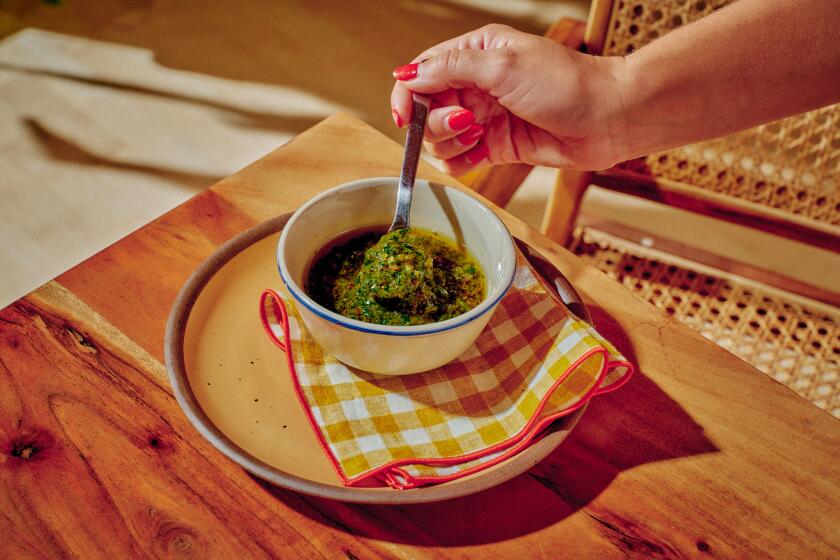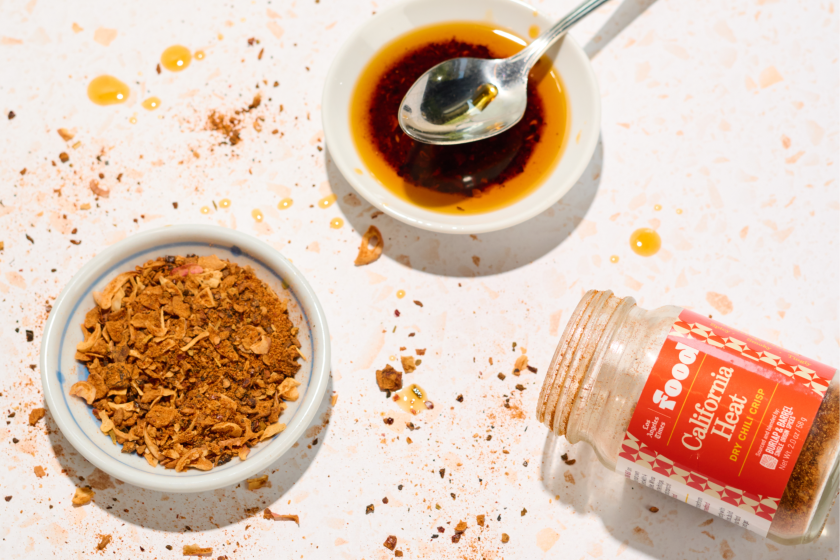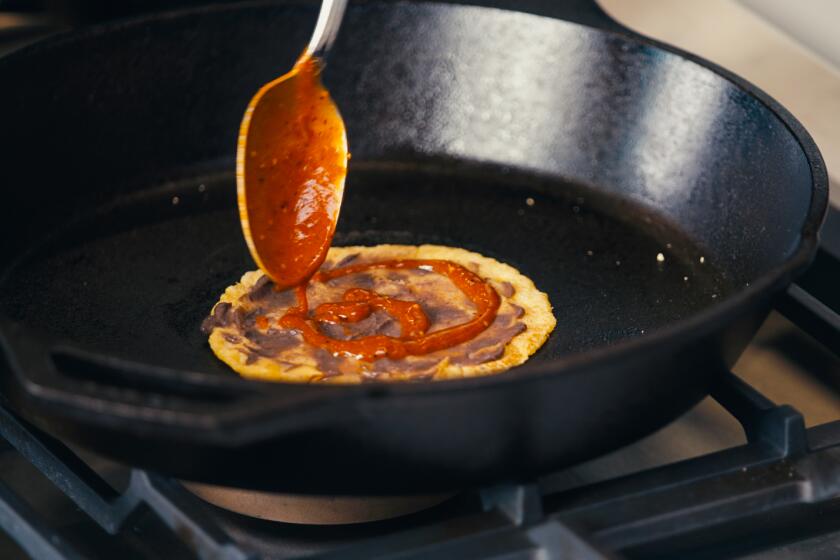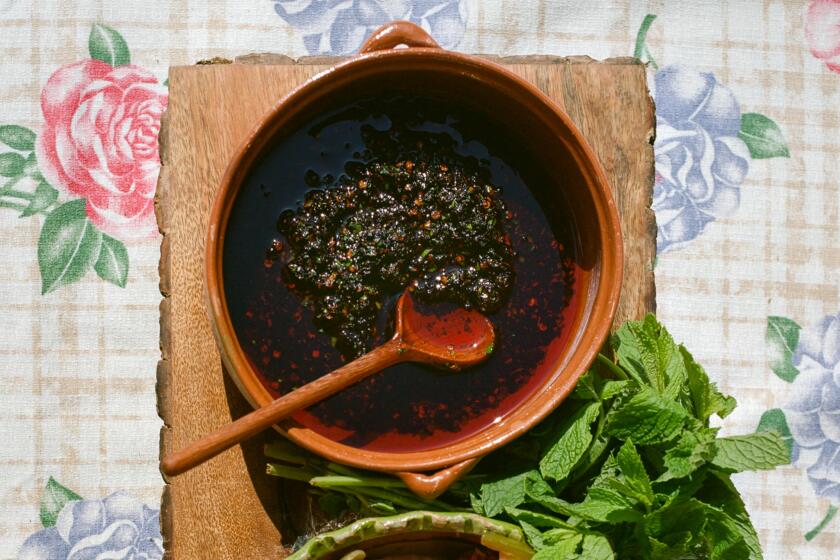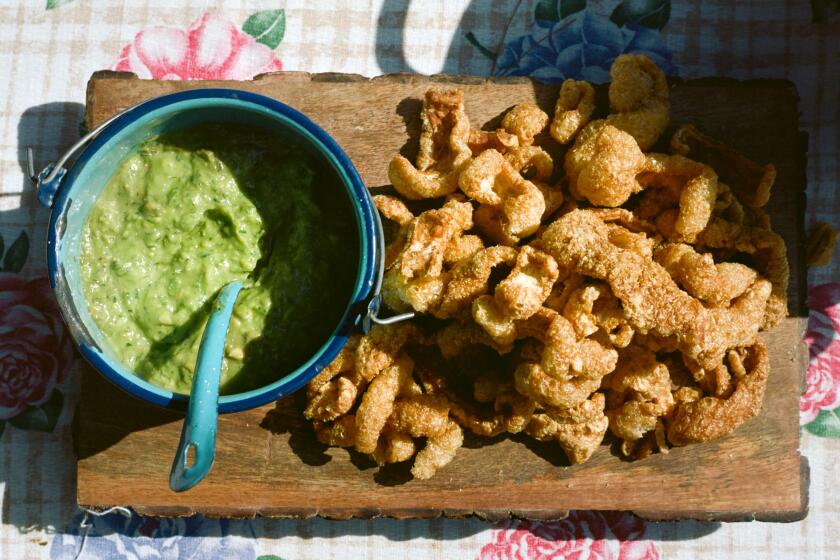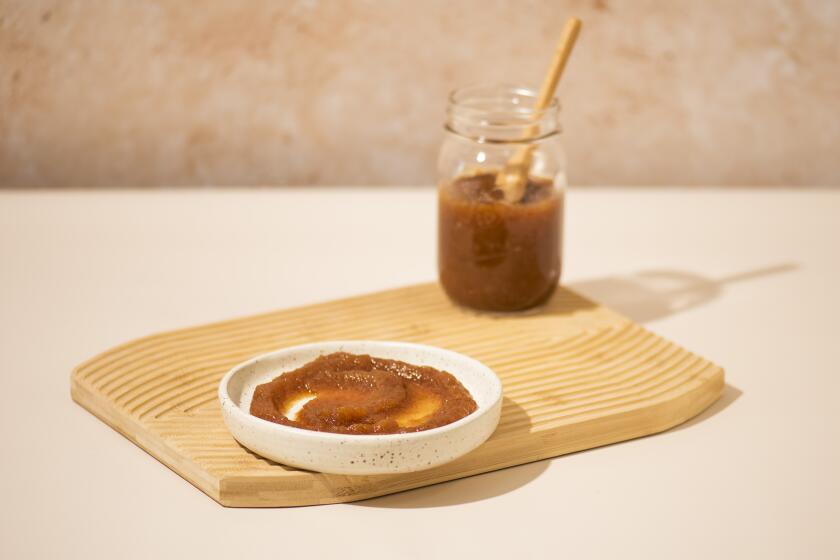Classic beurre blanc
PITY the poor saucier. Though the position of maker-of-sauces has been, since Escoffier, near the top of the kitchen brigade hierarchy, often the sauces themselves go unsung. Unlisted on menus, taken for granted alongside bigger-name items (pan-seared duck! roasted wild salmon!), they’re often relegated to the decorative side of a dish or tucked under the marquee ingredients.
But from such marginalized outposts, what beauty can be discovered; what subtle flavors can be discerned.
Take the classic beurre blanc sauce: a velvety, delicate butter sauce that originated in Nantes, France, on the Loire River, and was traditionally paired with poached fish. Subtle in flavor and ethereal in texture, it’s a warm lemon-colored sauce, lightly aromatic, with a faint hint of brine lacing the creamy butteriness. It’s an old sauce, but it came into its own during the heyday of nouvelle cuisine 30 years ago, when chefs began favoring it over the heavier roux-based sauces of the old French kitchens. Since then, it’s become part of the standard repertoire, a staple in many a restaurant kitchen. Yet we rarely hear of it -- maybe because it doesn’t have the cachet of a jus or a coulis.
“It’s not cutting edge anymore,” says Campanile’s Mark Peel. “We use it all the time, but we don’t necessarily advertise it as such. We don’t want to make the menu look like the back of a soup can.”
Sona’s David Myers is more effusive. “I love beurre blancs; I love the flavors; I love the richness. It’s one of those classics that always comes back: It’s a canvas. It can lend itself to anything.” And Water Grill’s David Lefevre notes that the sauce is another example of the kind of “retro resurgence” we’re seeing now (though it never really went away).
So what exactly is it? Beurre blanc is a simple emulsion -- a synthesis of a reduction of shallots, wine and vinegar, and a goodly amount of butter. And by goodly amount, I mean a lot, which might be why it’s often not prominently announced in restaurants these days. But butter, as anyone who watched Julia Child’s TV shows will remember, is a heavenly thing. Added (or mounted, as they say) to sauces and reductions, it’s the difference between ordinary, flat, sometimes overly acidic or watery concoctions and smooth, balanced, silken creations.
When paired with a main dish that can stand, or even demands, a rich sauce, -- poached fish or a grilled steak -- a good butter sauce can be the key to a deeply satisfying, luscious experience.
The balance of the emulsion (part acidic reduction, part pure butter) is also what gives beurre blanc its glossy essence -- and its charm. Not unlike a hollandaise or an aioli, it’s the fusion of a component that’s almost pure flavor, with one that’s pure fat. Alone, either is too much. But fused together, it’s a marriage made in Child’s own special quadrant of heaven.
So why don’t people make them more often? Maybe because we’re all a little wary of butter these days. But a little beurre blanc seriously satisfies an urge for richness -- and the rest of the menu can take a leaner tack.
For a sauce that yields a total of one cup, two sticks of unsalted butter seem to work the best. OK, that’s half a pound of the lovely stuff, but consider that recipes from the ‘60s -- Julia Child’s, for example, called for a full pound whisked into the same amount of liquid.
You can use less than 8 ounces of butter; the emulsion will still hold, and it will be a serviceable sauce if you use as little as 4 ounces. Use less than that, though, and you’ll have a thin acidic liquid rather than a real sauce. Or you can go up to the full pound -- but why? Eight ounces seem to strike the perfect balance in flavor, as well as achieve the right texture: thick and creamy, a sauce that coats the back of your spoon the way it should.
*
Not so fragile
PERHAPS another reason few home cooks make beurre blanc is its reputation. It was long considered to be terribly fragile, a sauce only the most skilled saucier could make. Cookbooks warned that the butter had to be ice cold, added in tiny increments, the nubs swirled in delicately and with, one assumes, sotto voce prayers to the necessary kitchen gods.
In fact, such meticulousness isn’t necessary. The key to making a successful beurre blanc is actually pretty simple. Yes, the butter should be cold and needs to go in slowly. But a few minutes outside the refrigerator won’t hurt it, and you can add it a few tablespoons at a time. Just consider that it is an emulsion -- that is, a combination of two incompatible ingredients, like oil and water -- and as such, requires a few basic conditions. To form an emulsion, you need enough liquid to bond to the butter, and the emulsion, once bonded, needs to be kept at the right temperature. If you let the sauce boil, it will separate, or break; if you let it get too cold, the butter will harden and essentially crystallize. But if you watch out for these simple things, it’s not at all difficult.
First, make the reduction. For a traditional beurre blanc, simmer finely minced shallots, Champagne vinegar and dry white wine until the mixture reduces by about 90%, then add more liquid (water for the basic sauce, other liquids if you want to vary things later) so that you have a few tablespoons. Why not simply reduce it that far in the first place? Because you want to cook off the raw taste of the ingredients and allow the flavors to combine. If you get distracted and find you’ve let it reduce too much, just add more water.
Next add a few bits of cold, unsalted butter, start whisking and immediately lower the heat. If you whisk the sauce constantly and keep the heat low, the butter will go in easily and create a glorious velvety sauce that is a lot more difficult to break than legend would have you think. Many cookbooks suggest adding cream to the reduction to further stabilize the emulsion because the cream acts as a binder. But a true beurre blanc doesn’t include cream. Because it’s fairly difficult to break the emulsion if you keep the heat on low and continue whisking, it seems unnecessary.
Once you’ve incorporated all the butter, you’re done.
Keep the finished sauce in a warm place -- near a pilot light, over a pan of warm water, in a thermos -- stirring it occasionally and adding water if it thickens a little. The irony of a beurre blanc is that it’s actually harder to keep than it is to make. With some vigilance, you can hold the sauce successfully for up to a few hours.
But all this presupposes that you’re running some sort of manic restaurant, wherein your delicate butter sauces need to be suspended in gastronomic limbo for repeating waves of impatient diners. At home, just make the sauce right before you want to serve it. End of Gallic mystery.
*
Clever chameleon
ONCE you’ve got the basic chemistry of a beurre blanc down, you can start to play with it.
If you’re pairing the sauce with meat instead of fish -- or maybe you’ve simply run out of Sauvignon Blanc but have an open bottle of Cabernet handy -- trade the white wine for a red, switch out the Champagne vinegar for red wine vinegar (or just double the red wine and omit the vinegar) and you have a beurre rouge instead. The deeper flavors of the red wine give the sauce a different register, one that particularly complements beef.
Substitute lemon juice for the wine and omit the vinegar to make a beurre citron. Or infuse herbs -- tarragon, thyme, rosemary -- into the reduction, or add stock to it or in place of some of the butter for something lighter.
Or try a coconut beurre blanc, adding coconut milk to the reduction instead of water or cream. Its subtle flavor adds a third dimension, rounding out the tart layer of the shallots and vinegar and lacing through the rich butter. It pairs beautifully with salmon or Arctic char, poached in a court bouillon spiked with lemon grass, Thai chili, ginger and kefir lime.
The possibilities of a good beurre blanc are myriad. At Bouchon in Napa Valley, chef de cuisine Josh Schwartz has been making a cider beurre blanc with local cider; he uses it to sauce day boat scallops, parsnip puree and sauteed apples. Marcus Samuelsson, chef at Aquavit in New York, devised a soy beurre blanc when he wanted a sauce to match the seared tuna and scallops in his cookbook “Aquavit.” In his sauce, chicken stock and soy sauce replace the wine and vinegar, and he adds fresh thyme as well as shallots to the reduction; then he adds a little cream and only a few tablespoons of butter.
“In 1984 when I was a student,” Samuelsson said, the classic beurre blanc “was the only way. Today it’s the foundation, but I can give you 50 different variations.”
Of course, you don’t want to go too far off the map. (Peel still winces when he recalls a jalapeno and caviar variant of the sauce he had in the ‘80s.) But with the right balance of flavors and a little patience, a beurre blanc can be a modern-day revelation.
raditional sauce is just the beginning
ONCE you get the technique down, you can make all kinds of variations on a classic beurre blanc. Brighten it with a little lemon juice and zest, or spice it up with a squeeze of lime and fresh ginger. Or make a coconut milk beurre blanc and pair it with poached Arctic char and a timbale of black rice.
Beurre citron: Replace the shallots, vinegar and wine with one-fourth cup lemon juice and 1 teaspoon lemon zest.
Beurre rouge: Replace the white wine with red and the Champagne vinegar with red wine vinegar.
Coconut milk beurre blanc: After the initial reduction, add 2 tablespoons coconut milk instead of water.
Ginger-lime beurre blanc: To the basic reduction sauce, add 1 tablespoon finely minced fresh ginger and replace the vinegar with an equal amount of lime juice.
Soy beurre blanc: A mixture of soy sauce and chicken stock replaces the wine and vinegar. Add a sprig of fresh thyme to the reduction. Then 1 tablespoon of heavy cream is added; cut the amount of butter to 2 tablespoons. Remove the thyme. This is looser and lighter than the traditional sauce.
Cider beurre blanc: Wine and vinegar are replaced with cider, and black peppercorns and a bay leaf are added to the reduction. Strain out the peppercorns and bay leaf before adding the butter.
Saffron beurre blanc: Add a pinch of saffron threads to the reduction.
For a lighter beurre blanc: Reduce the amount of butter that you whisk in to one-fourth pound (1 stick), and add 2 tablespoons of chicken stock after you’ve finished. The sauce will be looser than classic beurre, but it will have about half the fat.
In a medium heavy-bottomed saucepan, simmer the shallots, wine, vinegar, salt and pepper over medium-high heat until reduced to about 1 tablespoon. Add the water. Cook down until you have about 2 tablespoons.
Into the hot reduction, whisk in two cubes of butter and immediately turn the heat to low. Whisk in the remaining butter, one to two cubes at a time, until incorporated. It’s important to whisk constantly. The sauce should be thick and nappe, the consistency of heavy cream. Strain if desired.
It is best served immediately, but if you don’t, the sauce can be kept for an hour or two over a pan of barely warm water, near a pilot light or in a thermos. Stir occasionally, whisking in a little bit of water if the sauce thickens.
Get our Cooking newsletter.
Your roundup of inspiring recipes and kitchen tricks.
You may occasionally receive promotional content from the Los Angeles Times.










